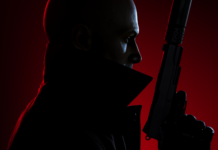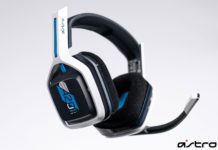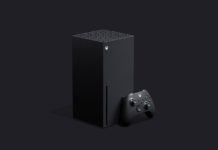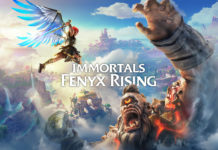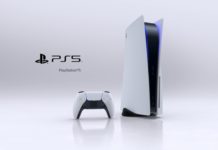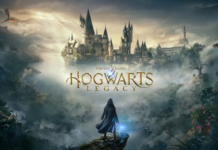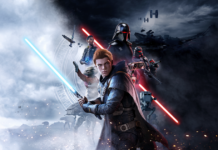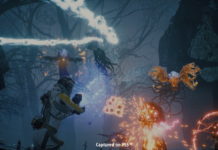Guitar Hero has been a brand
name that has meant a lot to the genre of musically based video games. The
franchise, for those who may not know, allows players to emulate being a rock
guitarist by slinging a fake guitar around their necks and they matching notes
scaling down an on-screen fret board.
While that sounds charming,
what Guitar Hero managed to do was elevate the whole experience to a frenetic
pace with difficulty levels that moved from manageable to insane finger
exercises, but kept the entertainment value at a constant flow with great music.
Then along came Rock Band, which took the concept a step further by adding not
just the bass guitar, but drums and vocals as well. Guitar Hero III released to
acclaim but Activision’s development team was already hard at work on the next
generation of GH – namely Guitar Hero World Tour, a title that took the band
concept and added to it measurably.
How? The peripherals, so
vital to the success of the game, were revamped and upgraded, 86 master tracks
were thrown in, and – for the Wii – the addition of a freestyle play mode was
added. But the Wii version of GHWT is not without its problems. For example,
part of the joy of being a drummer is keeping a steady pace. The drummer is the
time keeper and there seems to be an almost eye-blink framerate lag in some
songs that can throw off that rhythm. No, it’s not the addition of an extra
note, it just a slight delay in the steady pulse of a song.
And when it comes to the
vocal element, on a 27-inch standard television screen, the lyrics scrolling
across the top were almost unreadable unless you get very close to the screen.
It was not just this reviewer that had that problem (so no blaming it on old
eyes); a group of young teen-age girls who also gave the game a workout had
trouble reading the font of the lyrics, even when sitting five feet from the
television (much to the screams of dismay of their fellow band mates who claimed
they could not see their instrument note runs flowing down the screen).
Let’s break this down a bit:
The game modes …
Like previous GH titles, you
can hop into the quick play, or choose the career path. The former lets you play
as a single player or as a band. The latter charts a course from venue to venue,
gig to gig, that increases the challenge as you move forward. Driving the
challenge, in addition to the skill required to complete songs, are the
difficulty settings you choose. You play a gig, succeed at it, earn money and
unlock new items you can apply to your rocker or instrument. This is all pretty
much straight forward.
But there is much more to
GHWT than simply jumping in and playing the songs that others have created. You
can enter the music studio and create your own song. You can lay down keyboard,
bass, drum, rhythm and lead guitar lines. In what is slightly reminiscent of
great old programs like Cakewalk for the PC you can also go in and edit what you
have played on the instruments.
This was not as intuitive as
first hoped for but it is not that hard to get a handle on with a bit of
perseverance. And quite honestly, this is just a lot of fun to play around with.
Going into the instrument set-up for guitar, you can choose the key you are
playing in and insert Line 6 effects to the tonal quality of the guitar. The
idea behind this is to create one’s own songs and then upload them onto the GHWT
site.
Other game modes include
head-to-head battles (a highest score mode – which mean using star power, and
that means stringing together solid note runs), Nintendo WFC (WiFi Connection,
which allows the game to go online – though at the time this was tested, with
instruments that were finals but not retail packaged, there was no connection
available), and Mii Freestyle (a jam session).
The battles have been
improved from GH3 with players having to keep up with and stopping guest
guitarists from winning over the crowd. You will be competing against the likes
of Zakk Wylde, Jimi Hendrix and Ted Nugent.
The instruments
Because this is a brand new
game, featuring a new band concept for the Guitar Hero franchise, a new range of
instruments has been introduced. The drums have silicon heads, which allow a
bounce-back effect and some of the notes that you will play will also call for
accented hits (harder) than others. With the drums, there is a nice intuitive
vibe to playing them. There are six total drum notes available, going from snare
to high hat, crash cymbal, two toms and the floor pedal for the bass drum. The
set-up is much like a real drum set (and the drums even have a midi port in the
back to connect with true electronic drums), and the drum line that appears on
the screen does not follow the PlayStation button coding, but rather a color
coding that corresponds to the position of the elements of the kit. This means
that players will not be spending time with their head down, hunting for the
right ‘notes,’ but rather will be able to attack the drums and watch the screen.
Rather amazing is that if you remember a song, and can hear the different
musical instruments’ parts, you will find that all corresponds with what you
will be reading for striking the drum pads. This can make the experience feel
intuitive, on the whole.
However, there were a few
times when the high hat and cymbal didn’t seem to register and part of this was
resolved in the way they were tightened down. By locking them down hard, the
vibration of a solid hit seemed to overlay or not register. But loosening the
plastic bolts just a bit (not so they would work themselves free but to the
point where they were not “I need a wrench to get this off” tight), they did
register better.
When it comes to the guitar,
there are two flavors of playing – the rhythm/lead guitar and the bass.
Obviously the bass is a little easier at the lower levels to play, but the dev
team has taken pains to make certain that the bass runs are as involved and
exciting as other instruments. Like the drums, which have a solid bar across to
represent the kick pedal, the bass also has a solid line in the note runs to
indicate an open strum without depressing one of the colored buttons. The GH
guitar itself has been revamped to include a tap and slider bar. This will take
some practice to perfect but can be a boon to players for rapid attacks. Also
the star power is not only attached to the motion control of the guitar neck,
but you can activate it with the push of your palm on the body of the guitar.
The microphone is from
Logitech.
The instruments were all
wireless and were read very nicely by the game. The only problem occurred
internally with having to reset the Wii and a random Wii-mote to include it in
the overall pickup. However, you will need a separate Wii-mote for every
instrument employed – and that means one Wii-mote for drums, one for guitar, one
for bass and one for vocals.
The songs
Key to the success of the
title is the songs. They run the gamut of styles and this might be a bit of a
disappointment to some fans who will head into a gig looking to shred a little
in hard rock and butt up against Willie Nelson’s On the Road Again. The complete
song list, with 86 master tracks, contains:
-
311 – “Beautiful Disaster”
-
30 Seconds To Mars – “The
Kill” -
Airbourne – “Too Much Too
Young” -
The Allman Brothers Band –
“Ramblin’ Man” -
Anouk – “Good God”
-
The Answer – “Never Too Late”
-
At The Drive-In – “One Armed
Scissor” -
Beastie Boys – “No Sleep Till
Brooklyn” -
Beatsteaks – “Hail to the
Freaks” -
Billy Idol – “Rebel Yell”
-
Black
Label Society – “Stillborn” -
Black
Rebel Motorcycle Club – “Weapon of Choice” -
blink-182 – “Dammit”
-
Blondie – “One Way or
Another” -
Bob Seger & The Silver Bullet
Band – “Hollywood Nights” -
Bon Jovi – “Livin’ On A
Prayer” -
Bullet For My Valentine –
“Scream Aim Fire” -
Coldplay – “Shiver”
-
Creedence Clearwater Revival
– “Up Around The Bend” -
The Cult – “Love Removal
Machine” -
Dinosaur Jr. – “Feel The
Pain” -
The Doors – “Love Me Two
Times” -
Dream Theater – “Pull Me
Under” -
The Eagles – “Hotel
California” -
The Enemy – “Aggro”
-
Filter – “Hey Man, Nice Shot”
-
Fleetwood Mac – “Go Your Own
Way -
Foo Fighters – “Everlong”
-
The Guess Who – “American
Woman” -
Hush Puppies – “You’re Gonna
Say Yeah!” -
Interpol
– “Obstacle 1” -
Jane’s Addiction – “Mountain
Song” -
Jimi
Hendrix – “Purple Haze (Live)” -
Jimi Hendrix – “The Wind
Cries Mary” -
Jimmy Eat World – “The
Middle” -
Joe Satriani – “Satch Boogie”
-
Kent – “Vinternoll2”
-
Korn – “Freak On A Leash”
-
Lacuna Coil – “Our Truth”
-
Lenny
Kravitz – “Are You Gonna Go My Way” -
Linkin Park – “What I’ve
Done” -
The Living End – “Prisoner of
Society” -
Los Lobos – “La Bamba”
-
Lost Prophets – “Rooftops (A
Liberation Broadcast)” -
Lynyrd Skynyrd – “Sweet Home
Alabama (Live)” -
Mars Volta – “L’Via L’Viaquez”
-
MC5’s Wayne Kramer – “Kick
Out The Jams” -
Metallica – “Trapped Under
Ice” -
Michael Jackson – “Beat It”
-
Modest Mouse – “Float On”
-
Motörhead – “Overkill”
-
Muse – “Assassin”
-
Negramaro – “Nuvole e
Lenzuola” -
Nirvana – “About a Girl
(Unplugged)” -
No Doubt – “Spiderwebs”
-
NOFX – “Soul Doubt”
-
Oasis – “Some Might Say”
-
Ozzy Osbourne – “Crazy Train”
-
Ozzy Osbourne – “Mr. Crowley”
-
Paramore – “Misery Business”
-
Pat Benatar – “Heartbreaker”
-
R.E.M. – “The One I Love”
-
Radio Futura – “Escuela De
Calor” -
Rise Against – “Re-Education
Through Labor” -
Sex Pistols – “Pretty Vacant”
-
Silversun Pickups – “Lazy
Eye” -
Smashing Pumpkins – “Today”
-
Steely Dan – “Do It Again”
-
Steve Miller Band – “The
Joker” -
Sting – “Demolition Man
(Live)” -
The Stone Roses – “Love
Spreads” -
Stuck In The Sound – “Toy
Boy” -
Sublime – “Santeria”
-
Survivor – “Eye of the Tiger”
-
System of a Down – “B.Y.O.B.”
-
Ted Nugent – “Stranglehold”
-
Ted Nugent’s Original Guitar
Duel Recording -
Tokio Hotel – “Monsoon”
-
Tool – “Parabola”
-
Tool – “Schism”
-
Tool – “Vicarious”
-
Trust – “Antisocial”
-
Van Halen – “Hot For Teacher”
-
Willie Nelson – “On The Road
Again” -
Wings – “Band on the Run”
-
Zakk Wylde’s Original Guitar
Duel Recording
Part of the problem with
some of these songs is that, while they are from the bands that created them,
they may not be from the original bands. Take Lynryd Skynyrd’s Sweet Home
Alabama. This is the “Live” version and thus it differs from what music fans
might be used to hearing. What that translates to is that anticipating guitar or
drum runs can get you into trouble. And while it is a great song list, in and of
itself, it is a tad too diverse. Still, if one considers this the foundation,
then it is likely that support for the game down the line will include the
ability to focus on song genres or artist packs and deliver a much more focused
experience.
And the game itself is not
as hard as the GH3 experience. Yes, the difficulty does ramp up as you move from
beginner to easy through medium to hard and expert, but it was found that
playing on hard on GHWT was a much easier experience than playing on hard in
GH3.
Graphics and miscellaneous
While the graphics of the
game are solid, they cannot compare with the graphical elements of the high-def
platforms. The background band animations are very good, and come with a certain
amount of attitude in the guest appearances from the likes of Jimi Hendrix, but
the wrong font has been used on the Wii platform, making song titles barely
readable on a standard television. As mentioned, this becomes problematic when
you engage the vocals.
The sound quality is also
first rate, and the menus are intuitive. Yes, there are load times, and some
songs have long intros that might leave a solo player waiting, but this is all
to be expected. And while the song runs (corresponding what appears in the fret
bars to be played and the fingering of the guitar or hits on the drums) can make
sense, some of what you see might prove a little frustrating to real guitar
pickers. It’s a great finger exercise, but some of the songs are much harder to
play in GH than in real life.
When it comes to the
difficulty settings, the dev team has included a beginner setting that is so
easy, it allows even someone with the musical rhythms of a goldfish to
participate. For example, on the drums it can be as simple as tapping your foot
on the foot pedal to the bars scrolling down the screen without having to engage
multiple drum heads; or just strumming occasionally without the finger exercises
up the neck of the guitar.
Overall
GHWT represents a major leap
forward for the franchise, and it is indeed a welcomed leap. This is a game that
is amazingly enjoyable on many levels, from playing to creating music. The Wii
version of the game does have flaws that might make for some pause – like the
quality of the text for the singers, and the need to four Wii-motes if you wish
to play all band parts.
Still, the game is very
entertaining at its core and offers depth with the inclusion of the freestyle
and music studio modes. For those looking to jump into this whole genre, this is
worth a look.
|
|
Gameplay: 8.8
Some load times, but
the instruments play intuitively for the most part. The depth of the gaming
experience is classic GH with some nice additions. There seemed to be slight
framerate lags that were just enough to throw off the timing of the drums’
rhythm, and the text for the lyrics was very hard to read.
Graphics: 8.8
Solid animations and
characterizations, but that whole text element rears its head here.
Sound: 9.5
Nice to hear Hendrix
songs come into the mix. While the songs do try to cater to every listening
experience, it is not hard to imagine that this sets the foundation for, say, a
country edition, or pop, or …
Difficulty: Easy/Hard
There is a
difficulty setting that caters to every skill level.
Concept: 9.5
The instrumentation
is brought into the game is a remarkable manner. The master tracks are a very
nice addition and the game is diverse enough to appeal to fans of many musical
persuasions and skill levels.
Multiplayer: NA
This was not rated
because while there is the same-machine band concept, GHWT offers so much more
that was not tested because of the release received. The whole idea of playing
online with others, with matching up for challenges, or submitting songs is
vital to the franchise and that was not online. Playing on the same machine, as
a band, was a blast, though.
Overall: 8.9
The concept is a
very good one and the instruments are terrific, but might be problematic for
families that want to play all four parts but only have one or two Wii-motes.
The issue with the font used on a standard television is also a problem. Counter
the problems with the depth of the game, the sound and the fun to be had by
players from the young to old and you still have a viable hit. And the music
studio, and what it lays the foundation for, is a tremendous benefit. Not only
will it tap creative juices but might even teach a thing or two about music, in
spite of the fact that they instruments themselves (aside, maybe, from the
drums) bear little playable resemblance to real-life counterparts. This game was
tested by younger teens, older teens that only played at the expert level,
younger and older adults and all enjoyed the experience.





